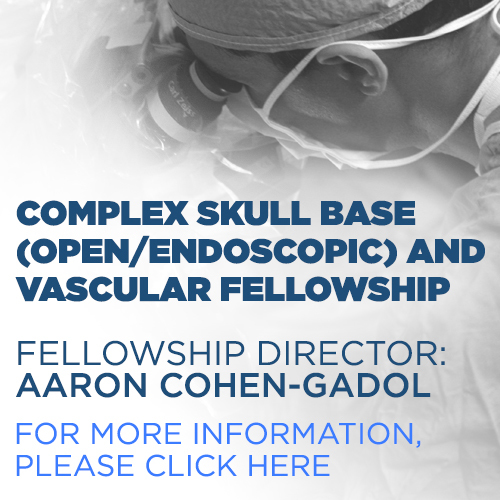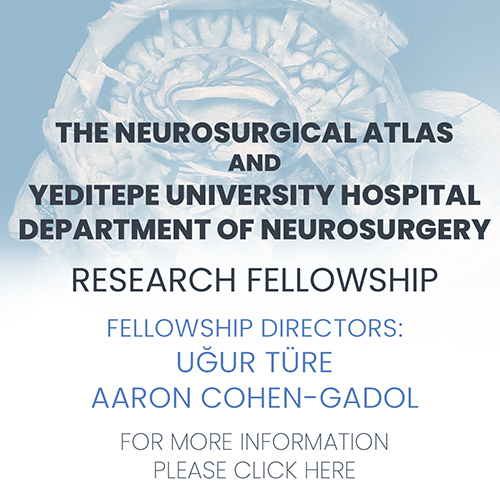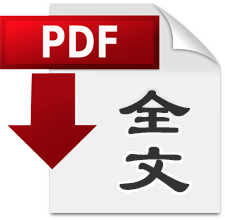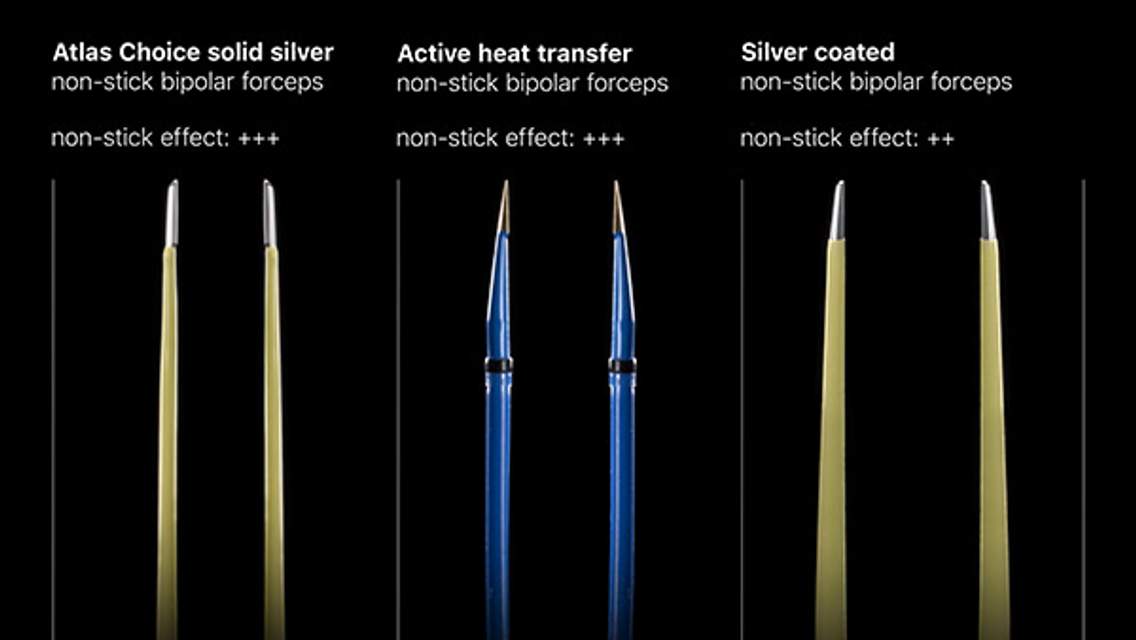Lessons Learned in Cranial and Skull Base Surgery
Walter Dandy demonstrated his stepwise technique for resection of acoustic neuromas: 1) relief of intracranial tension through the use of ventriculostomy, 2) further cerebrospinal fluid drainage through the cisterna magna upon dural opening, and 3) final exposure of the tumor via resection of the lateral cerebellum (Dandy WE. The Brain. Hagerstown, MD: WF Prior Company, 1966).
Surgery of the cranial base is a technically demanding task that requires strict attention to detail. Operative experience plays an important role in maturation of a skull base surgeon. I have summarized my personal lessons over a decade of practice in this chapter.
Skull Base Osteotomy and Brain Mobilization
Extensive bony removal often requires large soft tissue scalp flaps. Incisions should be planned with conservation of the blood supply and vascular pedicle in mind to avoid tissue ischemia and postoperative wound breakdown. Previous incisions, the potential need for any future incisions, and the patient’s history of radiation therapy should be considered during the final preoperative planning. Reconstruction and closure should be planned at the outset so that vascularized tissue flaps or pericranium can be prepared during the exposure.
The exposure should also be appropriately large enough to accommodate bimanual dissection under full microscope or endoscopic visualization to minimize or obviate the need for brain retraction. The reflected myocutaneous flaps (involving the temporalis and suboccipital muscles) should be mobilized away from the working angles of the operator.
Generous CSF drainage via a lumbar puncture/drain, ventricular puncture/drain, or opening of the basal cisterns reduces the need for cerebral retraction. I liberally use lumbar CSF drainage during my skull base cases and strongly believe in its value as the cisterns may be filled with tumor or not accessible during the early parts of dissection and brain mobilization (for example during anterior transpetrosal or middle fossa trajectories).
Even in cases that involve large tumors and midline shift, I have not observed any harmful effect when CSF is drained gradually through the lumbar drain upon opening the dura. I request up to a total of 80-100cc of CSF drainage in 10cc aliquots.
Appropriate patient positioning to exploit gravity retraction, precise and applicable bone resection without attempting indiscriminate and overzealous osteotomies, generous dissection of the arachnoid membranes and CSF drainage, and strategic use of the hand held suction device as a dynamic retractor will avoid the need for fixed retractors.
If the axis of suction and vector of retraction are not aligned, bimanual dissection may be compromised. This situation frequently occurs during extradural subtemporal and middle fossa approaches; fixed retractor blades may be used as brain “holders” rather than retractors.
In rare cases, very small areas of noneloquent brain may be resected to reduce the need for retraction. Appropriate neuroanesthesia as well as administration of osmotic agents and diuretics also contribute to brain relaxation. The details of each operation should be discussed preoperatively with the anesthesiologist so expectations are met. Intraoperative monitoring should be used when necessary.
Important Controversies
The extent of an osteotomy remains a matter of ongoing debate. For example, skull base surgeons are proponents of orbitozygomatic osteotomies for the majority of parasellar lesions, whereas non-skull base surgeons use this approach sparingly and are satisfied with the exposure afforded through a standard or expanded pterional craniotomy.
The bony approach should not be tailored according to the experience of the surgeon, but instead based on the need for a broadened working corridor considering the location and consistency of the lesion. The need for a skull base osteotomy also depends on the regional cerebrovascular morphology/anatomy of the individual patient. Petroclival epidermoid cysts and fibrous meningiomas of the same size require different extents of exposure.
Generally, I use extended skull base exposures (orbitozygomatic, petrosal and transcondylar osteotomies) during 20% of my skull base tumor cases. This means that I require a convincing reason to use a skull base approach for a complex skull base tumor.
For example, I complete a standard pterional craniotomy and then aggressively drill the roof of the orbit and the lateral sphenoid ridge. This alternative type of extended pterional osteotomy provides some of the advantages of a modified fronto-orbital or orbitozygomatic osteotomy without unnecessarily extending operative time or increasing the risk of cosmetic deformity.
Similarly, for posterior fossa operations, I drill the bone over the sigmoid and transverse sinuses and gently mobilize these structures using retraction sutures to expand the operative corridor through the retromastoid and paramedian supracerebellar routes. The transection of the tentorium and intradural petrous bone drilling offer additional opportunities to avoid a radical petrosectomy. The use of angled microsurgical instruments and angled endoscopes has also decreased the need for petrosectomies and other more radical skull base exposures.
Figure 1: The progressive level of ventrolateral and ventral brainstem exposure via more radical transpetrosal osteotomies is illustrated. The retrolabyrinthine, translabyrinthine, and transcochlear routes each afford a less obstructed view of the anterior brainstem but also carry higher complication rates and extended operative times as compared to the retrosigmoid approach. Surgeons often do not consider the longer operative sessions and their more invasive nature as factors in the long-term quality of life of the patient. Dynamic retraction and strategic maneuvers for tumor resection often obviate the need for more radical skull base osteotomies over the retrosigmoid route.
Intradural Microdissection
Dissection and resection maneuvers should strictly adhere to the principles of microsurgery. They require the use of sharp and avoidance of blunt dissection methods. Blunt dissection involves pulling or pushing delicate tissues to open or create dissection planes, and can lead to ischemic and traction injuries. All exposed brain surfaces should be covered by a piece of Telfa to avoid inadvertent cortical injury during the transfer of instruments and desiccation injury from the heat generated by the intense light of the microscope.
Before they are debulked, benign tumors such as meninigomas should be first devascularized at their dural base, and only then removed in a piecemeal fashion. The tumor’s consistency often affects the extent of the dissection required to facilitate aggressive tumor resection. Leaving a small fragment of fibrous tumor adherent to critical neurovascular structures dramatically reduces the risk of complications. Overaggressive, indiscreet, and overzealous resection to primarily achieve a tumor-free operative field will disappoint both the surgeon and the patient postoperatively.
I often resist the strong temptation to remove the last, very small piece of adherent acoustic tumor attached to cranial nerve VII: leaving behind the remaining small piece, approximately 2% of the tumor, will avoid significant facial weakness that is unacceptable to patients. Radiosurgery has proven that long-term tumor control for small remnants is readily possible.
Tumors distort the normal anatomy, often displacing and splaying the cranial nerves, branching/perforating arteries over their capsule. I routinely identify the normal anatomy and work toward the abnormal/distorted anatomy in a direction parallel to the critical structures to reduce the risk of injury. A monopolar stimulating probe assists in identifying and tracking the cranial nerves. It is critical to respect the arachnoid and pial planes in order to maintain the nerves’ blood supply and reduce the risk of injuring the perforating vessels. Preserving vasculature, including perforators and veins, is essential for maintaining function.
To further protect function, I use continuous fluid irrigation to clear the operative field so that I can avoid the need for the suction device to be placed in close contact with the delicate cranial nerves, perforating vessels, and veins.
Within the small working space at the skull base, it is important to aggressively debulk the tumor using an ultrasonic aspirator while respecting the tumor capsule. Intracapsular tumor decompression allows flexible tumor capsule mobilization and expanded working angles for microdissection through the arachnoid membranes. This important principle prevents inadvertent forceful pulling and pushing on the bulky tumor, which often leads to cranial nerve and vascular injuries. It also enables the surgeon to avoid blind dissection around the corners of the capsule.
If the cranial nerve is very adherent to the tumor capsule, I use very fine forceps to gently grab and peel the encasing arachnoid membrane of the nerve along with the nerve away from the capsule without directly manipulating the cranial nerve. Manipulation of the neural tissue and cranial nerves should be avoided or minimized as much as possible.
The Use of the Encasing Arachnoid Bands of the Cranial Nerve V as a Handle to Mobilize the Nerve from the Tumor Capsule
For the overall procedure to be successful, the surgeon must exhibit patience and maintain his or her composure, especially during the last hours of the operation when the most critical dissection is conducted. Technical efficiency is essential for this success as inefficient operative maneuvers lead to operator’s fatigue and disappointing outcomes for the patient. Fatigue does affect surgical judgment, and it is one of the under-recognized leading causes of operators’ errors. This is one of the reasons why I use time-consuming extensive skull base osteotomies judiciously.
The early, less critical parts of the operation should be conducted efficiently so that, in turn, I have the capacity to focus my utmost attention on preserving the cranial nerves and perforators. Operations lasting more than 12 hours must be staged.
The first operation offers the best chance for achieving a cure (gross total resection), so every attempt should be made to achieve this goal. The patient’s well-being is the utmost goal, not the surgeon’s dogma (that is, what was learned during residency and fellowship) or his/her agenda. This doctrine may be subconsciously or unwillingly ignored during the intense moments of the operation.
Surgeon’s Efficiency
When performing skull base surgery, I feel most comfortable operating while seated and using an armrest. The surgeon’s own comfort can prevent fatigue and allows for smooth microsurgical dissection maneuvers during the critical portions of the surgery. These critical maneuvers are often required later in the operation when fatigue has set in.
I use a mouthpiece to minimize the frequent, redundant and nondeliberate movements and to continue bimanual dissection uninterrupted. For example, the mouthpiece allows me to avoid repeatedly handing over instruments in order to refocus the microscope using the microscope’s handles. The mouthpiece is absolutely indispensable for me to achieve microsurgical efficiency, but there is a learning curve involved in using it.
Monitors showing the operative view through the microscope or endoscope should be available to other members of the operating room team. These monitors allow them to follow the flow of surgery and alert them as to which dissecting instruments will be needed for the next step. For further details, please refer to the chapter on Surgeon’s philosophy and Operating Position.
Figure 2: Operating in the seated position using an armrest while using the mouthpiece (visible next to the surgical mask in the right lower inset image) significantly advances my operative efficiency. The surgical assistant stands across the table to transfer instruments.
The Surgeon’s Position and the Use of the Mouthswitch
Reconstruction and Closure
The appearance of a postoperative CSF fistula easily spoils the joy of a great result after a challenging operation. When possible, a watertight dural closure is highly desirable after resection of a skull base tumor. The use of pericranium or fascia lata is preferred over dural allografts. Vascularized pericranium, harvested during exposure, is the ideal material. Generous communications between the intracranial space and the nasal passages or oropharynx require a vascularized flap for closure.
For most cases when a direct communication between the nasal passages or oropharynx and the intracranial space is not evident, strips of fat may be used to further occlude the dural defect when primary dural closure is not feasible (that is, for intradural operations involving anterior and posterior petrosectomies). If the frontal sinus is entered, the mucosa should be curetted away and the frontal ostia occluded using temporalis muscle pledgets. I may also use a piece of vascularized pericranium to cover the exposed sinus. Alternatively, bone wax mixed with bacitracin powder may be used to fill the sinus.
Reoperations involving radiated tissues present unique challenges and complications that require participation of our plastic surgery colleagues for their expert input.
Postoperative Care
A postoperative computed tomography (CT) scan can exclude the presence of significant pneumocephalus, hematoma, or other complications such as asymptomatic brain swelling and ischemia. This imaging modality will guide the timing for transfer of the patient to the regular floor.
Accumulation of massive amount of pneumocephalus in the absence of obvious CSF leakage should alert the surgeon to discontinue lumbar CSF drainage and search for an occult CSF fistula that would require operative repair. Because delayed hydrocephalus after skull base surgery is possible, CSF leakage, if unresponsive to temporary lumbar drainage or definitive operative repair, may demand placement of a ventriculoperitoneal shunt for its repair.
Pearls and Pitfalls
- Skull base surgery is physically demanding, and at times exhausting and treacherous. The neurosurgeon must be decisive, deliberate, and serene at all times, including under pressure. The surgeon is the “captain of the ship,” a respected leader who needs to instill confidence in the operating room staff and the rest of the team. Thus, there is no excuse for demeaning or critical behavior anytime. If the surgeon acts inappropriately, his/her demeanor undermines the operative success and compromises the patient’s welfare.
- There is no short-cut when it comes to spending time in the microsurgical laboratory to learn about complex skull base anatomy.
- It is essential that young surgeons work with experienced mentors to learn and develop the subtleties of technique necessary for successful microsurgery.
- The surgeon needs to be an expert in both transcranial and endoscopic techniques, and the approach should be tailored to the individual patient, not dictated by the surgeon’s training, interest, or comfort level.
- Operative preparation entails comprehensive interpretation of preoperative images, including vascular studies. The veins often do not get the attention they deserve; a venous infarction would be devastating to the patient.
- When in doubt, remove more bone and avoid brain retraction. However, dogmatic and imprudent use of skull base osteotomies should be avoided.
- Fixed retractors should be avoided at all cost. Minimize the use of fixed retractors by embracing these maneuvers:
- Placement of a lumbar drain
- Patient positioning to exploit gravity retraction
- Judicious use of skull base osteotomies supplemented by innovative operative corridors aimed at minimizing brain retraction and transgression
- Generous opening of arachnoid membranes
- Dynamic movement of the handheld suction device to allow exposure of the target. This technique requires advanced bimanual dexterity.
- An advanced understanding of the three-dimensional anatomy of the lesion and the transference of the preoperative imaging data onto the operative field using skull base landmarks will allow the surgeon to remove the lesion safely through limited working spaces. Flexible working angles are more important than generous working spaces.
- Sharp dissection is the only choice for dissection. Aggressive blunt dissection leads to ischemic and traction injuries.
- Tumors, including meningiomas, should be first devascularized, debulked, and then dissected. This sequence is the recipe for success.
- Working with fine forceps, I use the encasing arachnoid membranes of the cranial nerves as a handle to peel the nerve gently away from the mobilized tumor capsule. This maneuver prevents direct manipulation of the nerve.
- The initial, less critical portions of the operation should be performed efficiently so the surgeon can approach the later and most critical stages of cerebrovascular microdissection without fatigue.
Please login to post a comment.
















